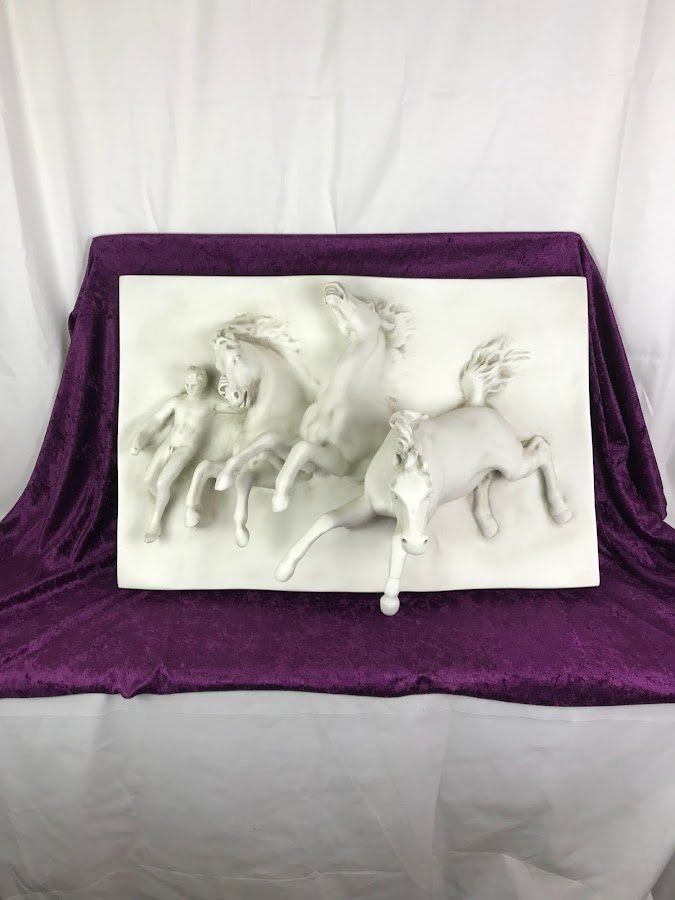 Image 1 of 11
Image 1 of 11

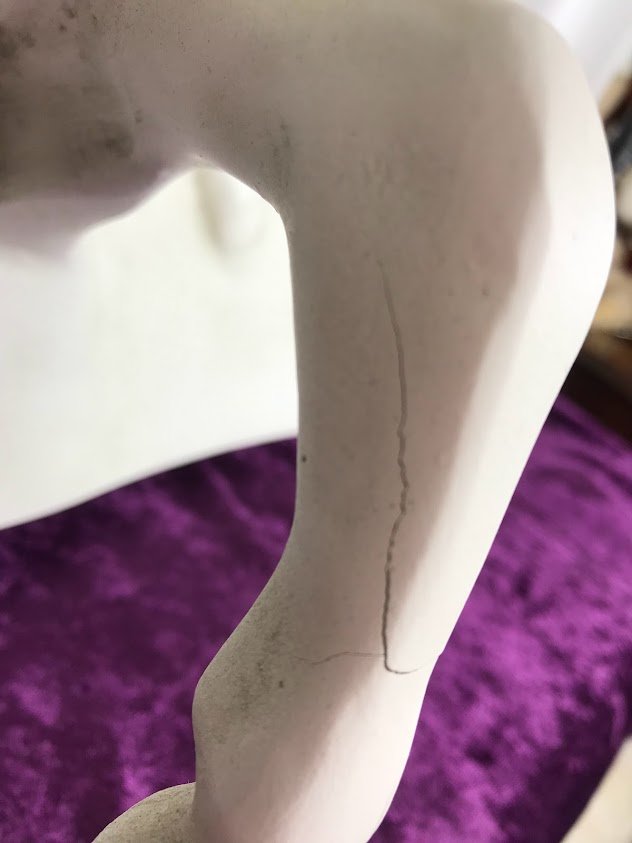 Image 2 of 11
Image 2 of 11

 Image 3 of 11
Image 3 of 11

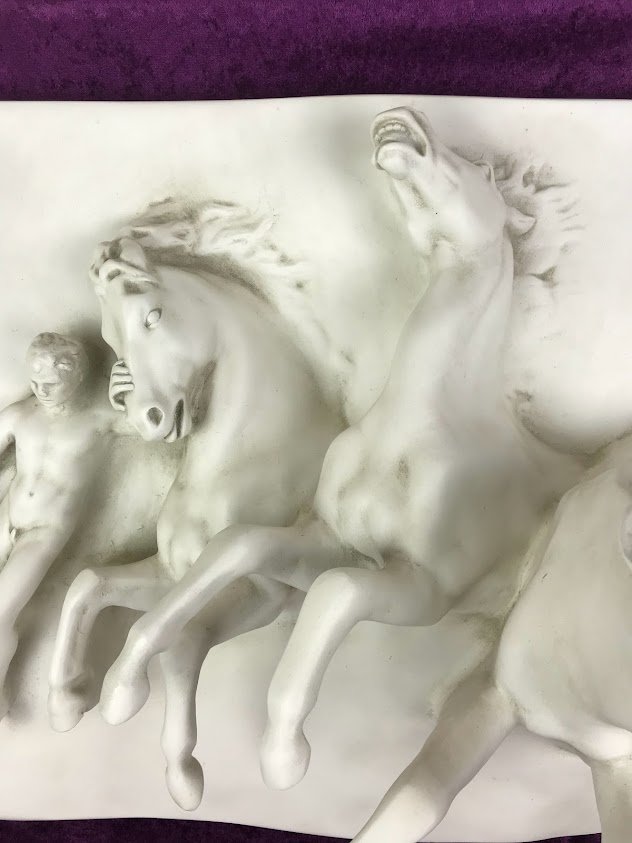 Image 4 of 11
Image 4 of 11

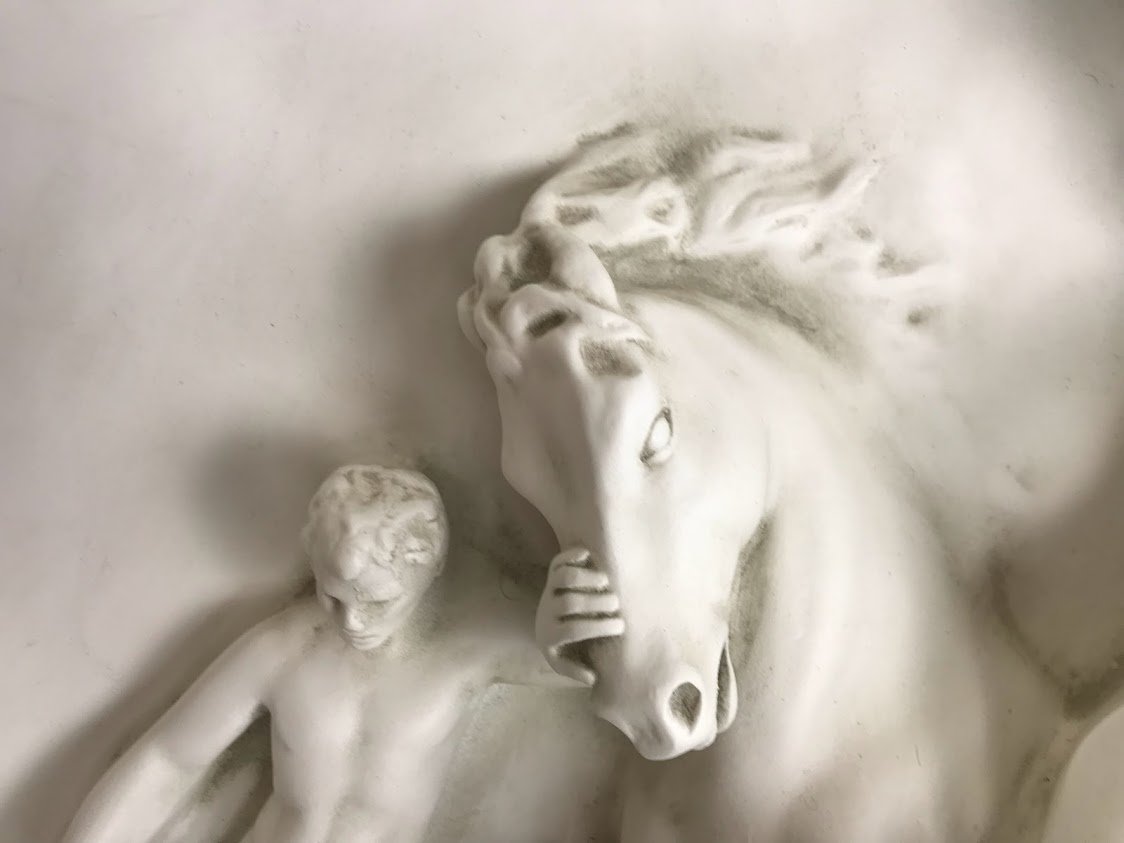 Image 5 of 11
Image 5 of 11

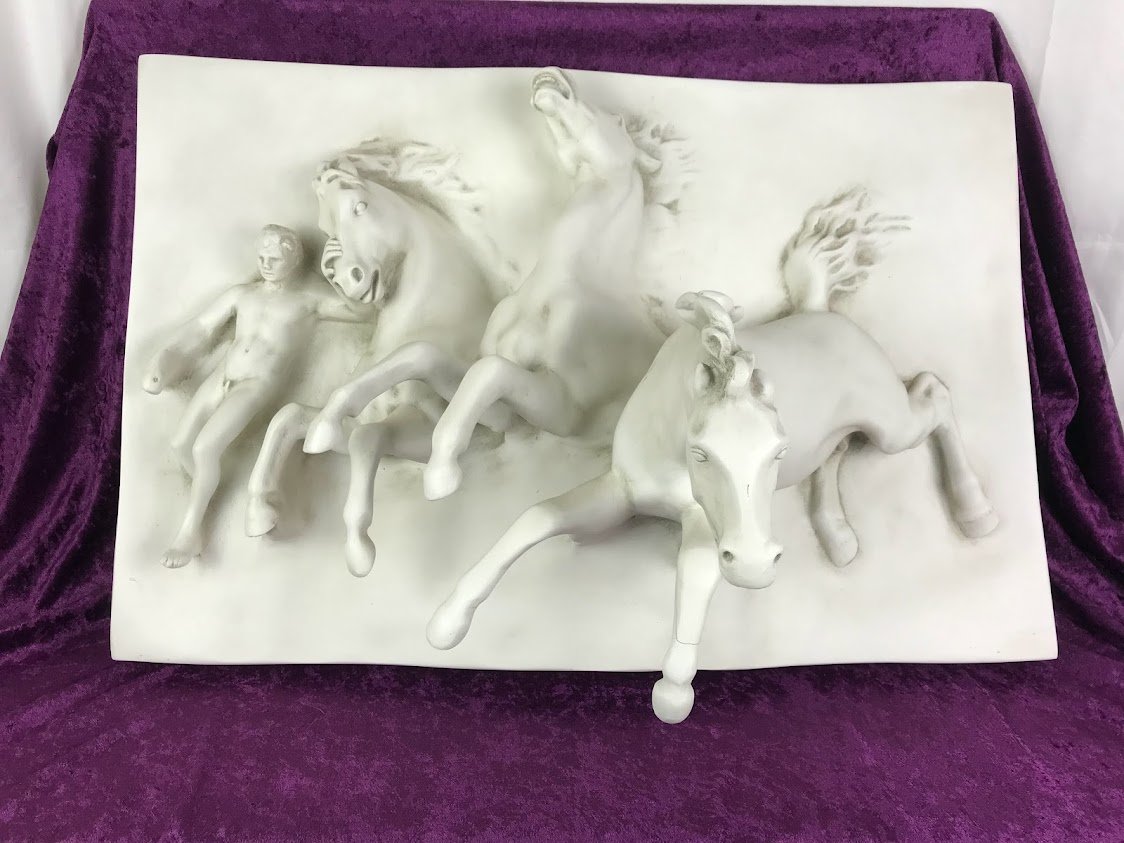 Image 6 of 11
Image 6 of 11

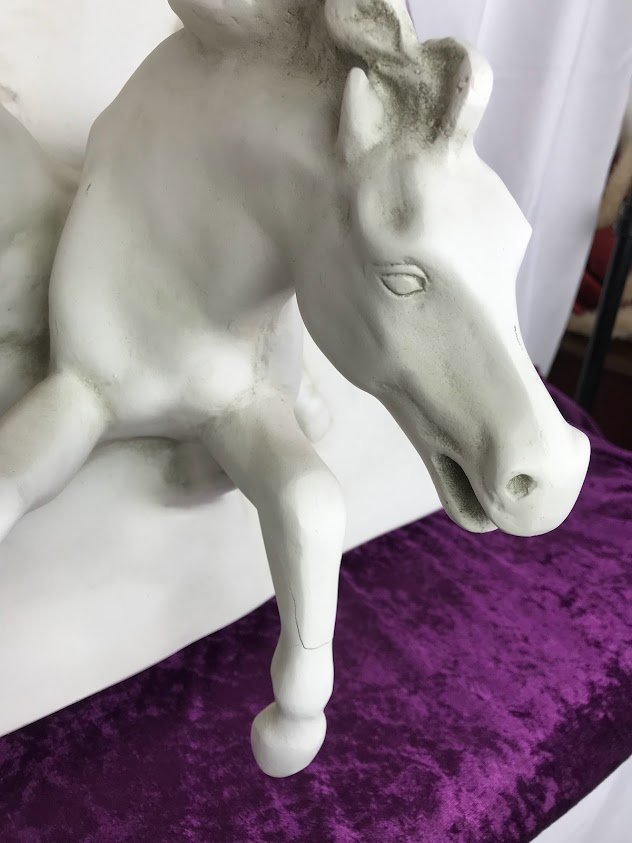 Image 7 of 11
Image 7 of 11

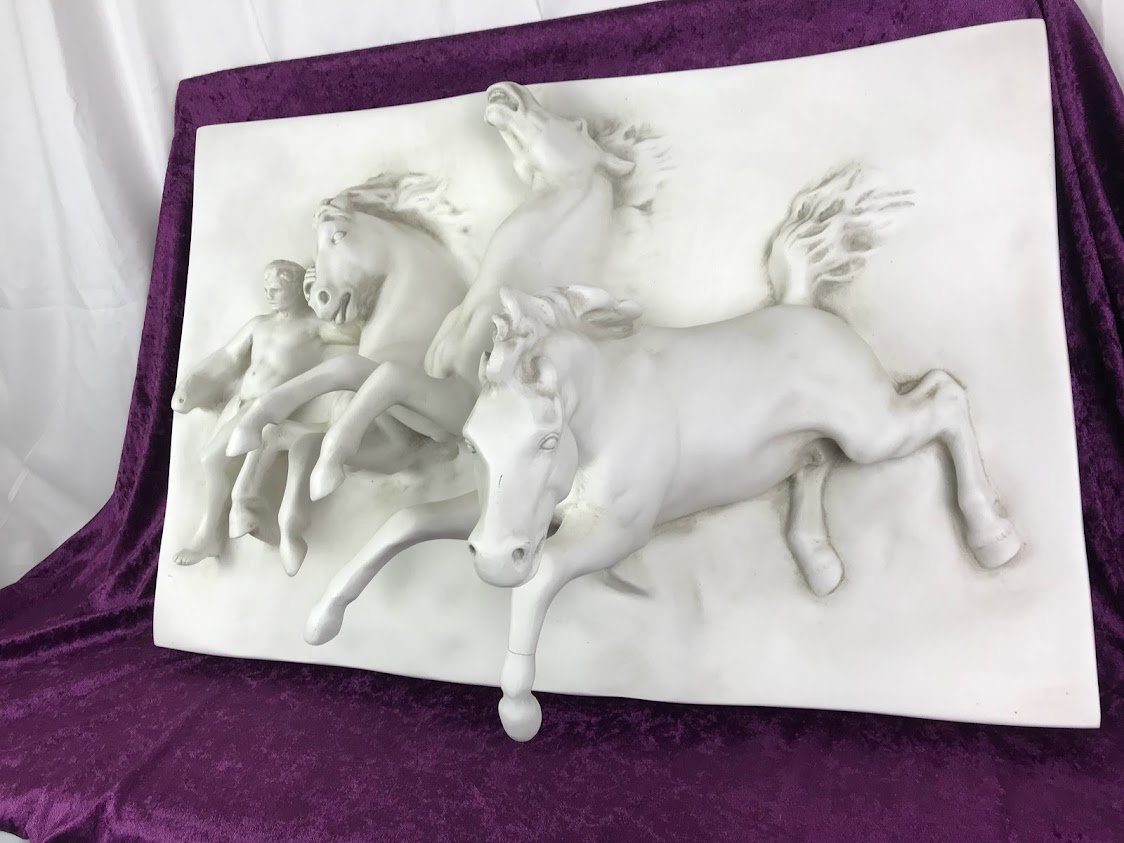 Image 8 of 11
Image 8 of 11

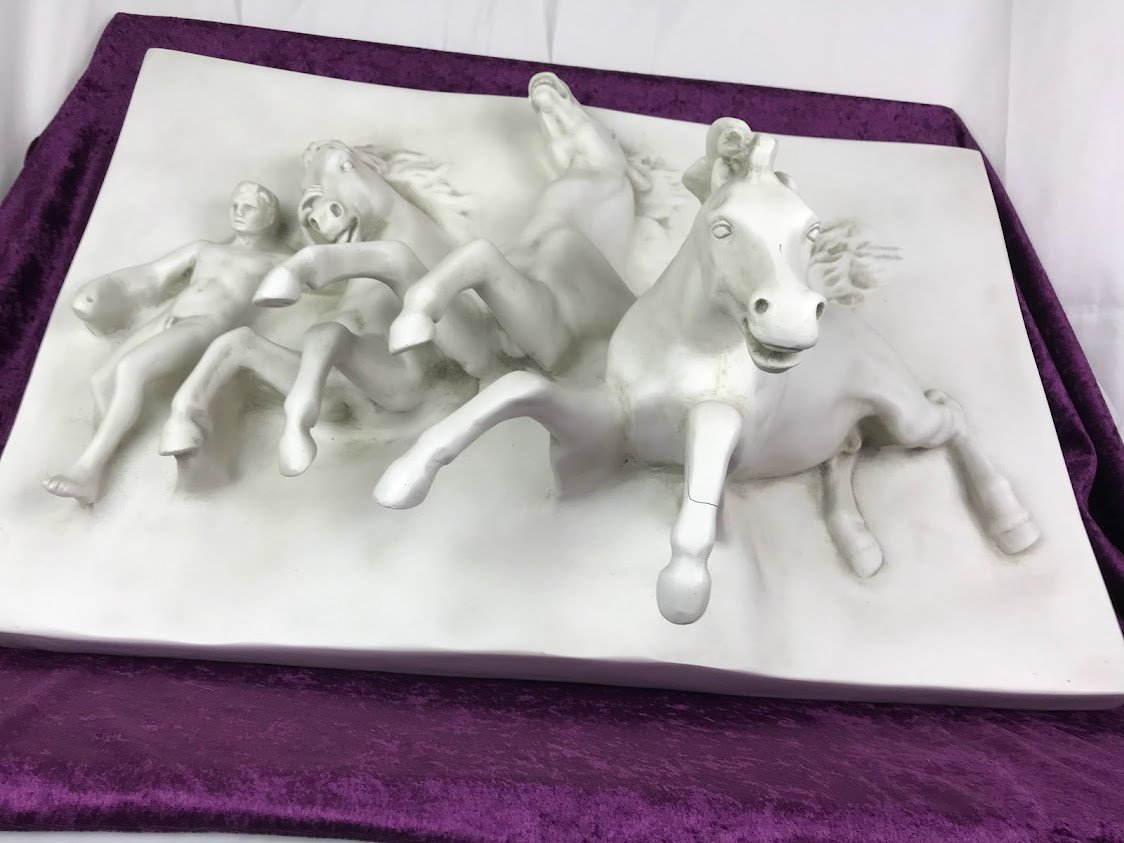 Image 9 of 11
Image 9 of 11

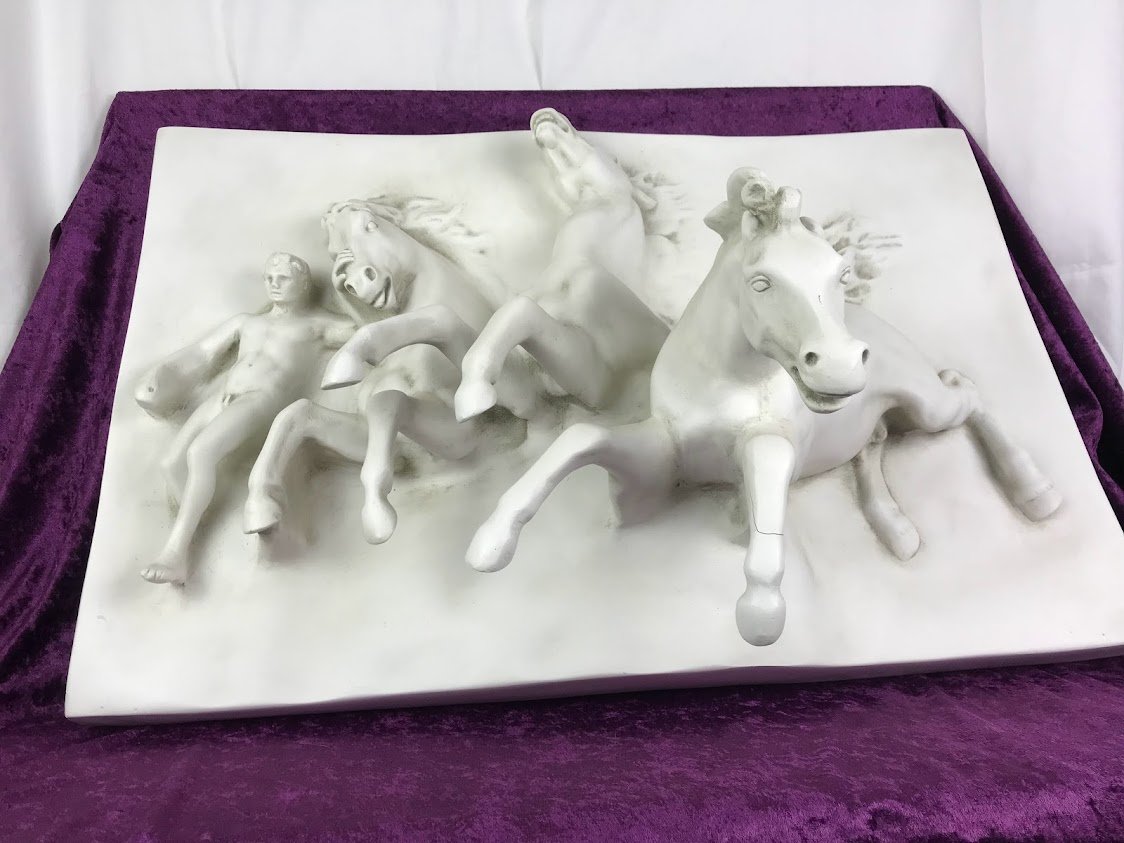 Image 10 of 11
Image 10 of 11

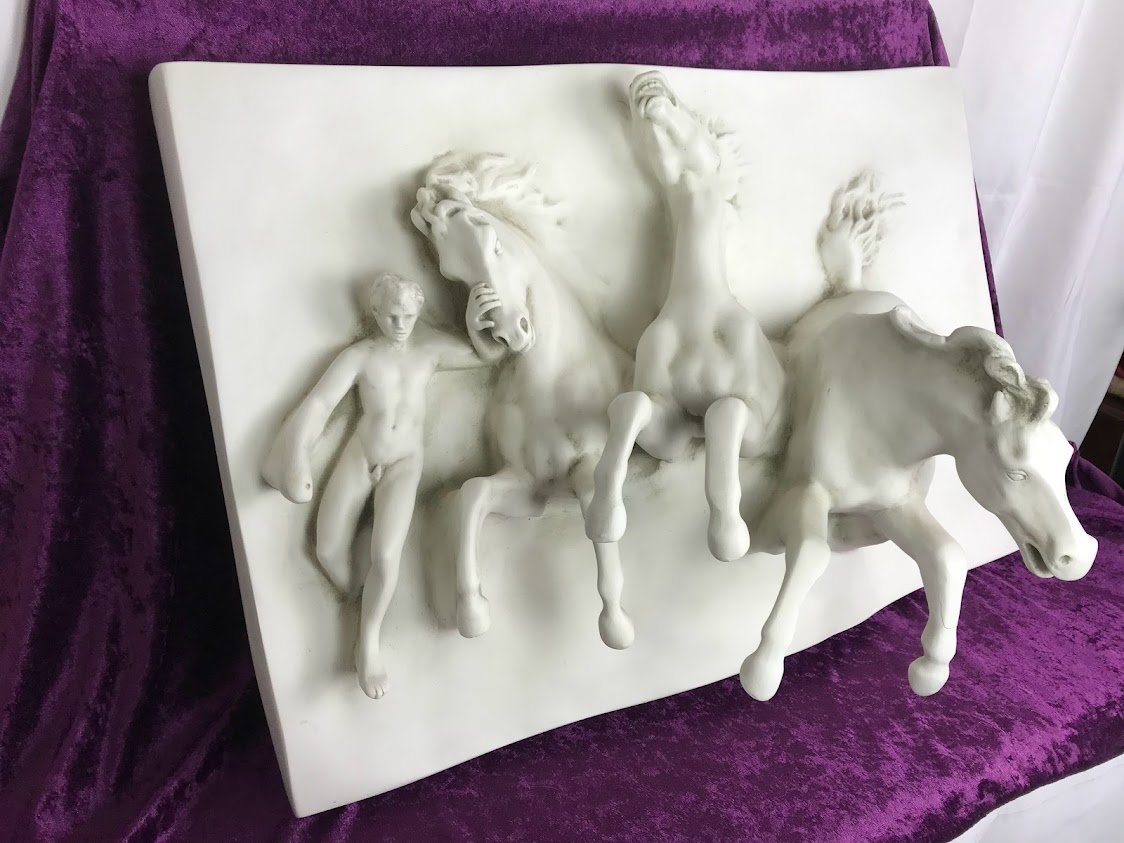 Image 11 of 11
Image 11 of 11












Antique The Flight of Night / The Horses of Anahita Sculpture, Wall Hanging Art
Exquisite three dimensional sculpture of Anahita's assistant attempting to reign in the wild horses. Three horses leap from the background creating incredible depth. Stunning depiction of wild horses, the front leg of the horse on the right does have a hairline crack which does not completely circle around leg.
American artist William Morris Hunt (1824-1879) was intrigued by Anahita, the Persian goddess of the moon and the night. Most prolific in painting, Hunt was also a sculptor and lithographer. He was brother to architect Richard Morris Hunt. The composition resembles a sketch he created circa 1847 and one of the two murals he painted in 1878 in the Assembly Chamber of the New York State Capitol in Albany (that are no longer visible due to the new ceiling constructed in 1888). Anahita, not depicted in the sculpture, drives the horses forward as day breaks while an attendant to the left aids her with the unruly horses. In exquisite relief, the horses leap out from the background. The head and shoulders of the horse to the right are modeled fully in the round. Hunt started sculpting the artwork in 1848. Reproductions were cast during Hunt's lifetime and later by his estate, as well as by P.P. Caproni and Brother.
Measures: 28” x 12” x 18.5”
Exquisite three dimensional sculpture of Anahita's assistant attempting to reign in the wild horses. Three horses leap from the background creating incredible depth. Stunning depiction of wild horses, the front leg of the horse on the right does have a hairline crack which does not completely circle around leg.
American artist William Morris Hunt (1824-1879) was intrigued by Anahita, the Persian goddess of the moon and the night. Most prolific in painting, Hunt was also a sculptor and lithographer. He was brother to architect Richard Morris Hunt. The composition resembles a sketch he created circa 1847 and one of the two murals he painted in 1878 in the Assembly Chamber of the New York State Capitol in Albany (that are no longer visible due to the new ceiling constructed in 1888). Anahita, not depicted in the sculpture, drives the horses forward as day breaks while an attendant to the left aids her with the unruly horses. In exquisite relief, the horses leap out from the background. The head and shoulders of the horse to the right are modeled fully in the round. Hunt started sculpting the artwork in 1848. Reproductions were cast during Hunt's lifetime and later by his estate, as well as by P.P. Caproni and Brother.
Measures: 28” x 12” x 18.5”
Exquisite three dimensional sculpture of Anahita's assistant attempting to reign in the wild horses. Three horses leap from the background creating incredible depth. Stunning depiction of wild horses, the front leg of the horse on the right does have a hairline crack which does not completely circle around leg.
American artist William Morris Hunt (1824-1879) was intrigued by Anahita, the Persian goddess of the moon and the night. Most prolific in painting, Hunt was also a sculptor and lithographer. He was brother to architect Richard Morris Hunt. The composition resembles a sketch he created circa 1847 and one of the two murals he painted in 1878 in the Assembly Chamber of the New York State Capitol in Albany (that are no longer visible due to the new ceiling constructed in 1888). Anahita, not depicted in the sculpture, drives the horses forward as day breaks while an attendant to the left aids her with the unruly horses. In exquisite relief, the horses leap out from the background. The head and shoulders of the horse to the right are modeled fully in the round. Hunt started sculpting the artwork in 1848. Reproductions were cast during Hunt's lifetime and later by his estate, as well as by P.P. Caproni and Brother.
Measures: 28” x 12” x 18.5”
